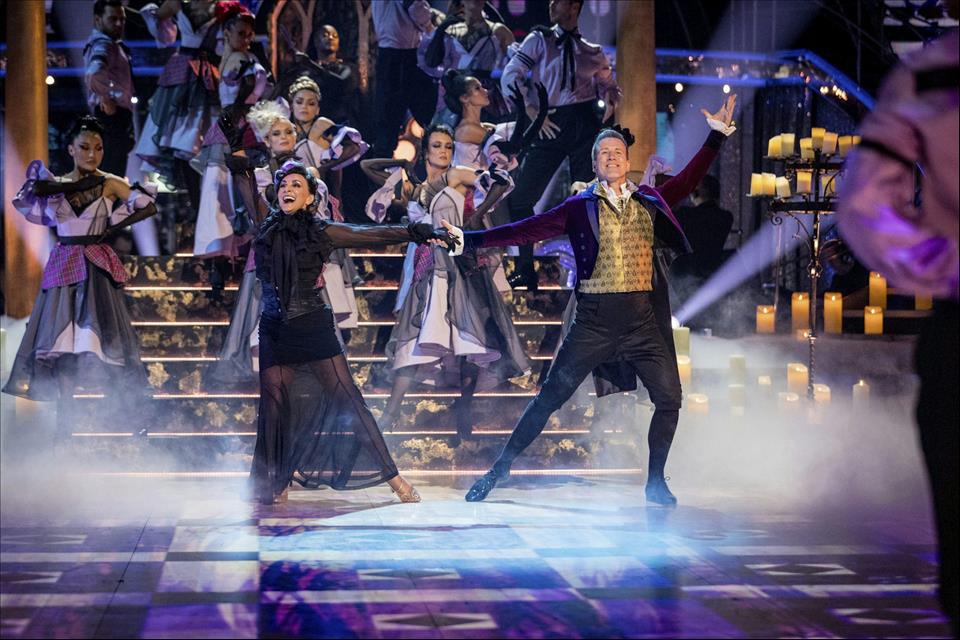
What Strictly Come Dancing Can Teach Us About How (And How Not) To Give Feedback
As a feedback researcher and an avid Strictly fan, I listen closely too. Feedback is really important if a learner is to progress, and sometimes the Strictly judges give the dancers useful tips they can use to improve. But – more often – they don't.
We can use specific criteria to work out whether feedback will be effective or not. This applies both to Strictly and to other contexts, such as the education system.
Feedback should clarify what good performance is. This means that learners need to be clear about their goals if they are to close the learning gap – the distance between where they are and where they want to be.
Feedback on Strictly Come Dancing in season 22.
On Strictly, the judges' comments often lack any real clarity and are rather generalised. They often don't point out specific goals that the celebrity dancer should be aiming towards. For example, in series 20, judge Motsi Mabuse commented:
However, judges do sometimes give specific details about necessary changes, and even some use of modelling to aid understanding. Here, in series 19, Anton Du Beke added to this feedback by demonstrating the correct positioning to the dancer:
This example of feedback gives the learner much clearer criteria for success, which they can then implement themselves.
Learning through discussionFeedback should also encourage dialogue – conversation – between a teacher and learner around learning. Genuine meaningful dialogue means that learners can clarify meaning, ask further questions and immediately correct misunderstandings. In other words, the feedback message is more likely to be understood.
This doesn't tend to take place on Strictly. The judges hold a position of power and feedback is essentially gifted from the“expert” to the“novice”. The dancers – both amateur and professional – are voiceless, other than to thank the judges for the gift of their feedback. If they are not, they are instructed to know their place, as in this exchange between judge Len Goodman and professional dancer Brendan Cole, from series eight, summarised here:
Michelle Williams and Brendan Cole perform the jive, 2010.
This expert-novice relationship is common in other learning environments, such as the classroom. However, to disregard the voice of the learner altogether dismisses the fact that it is the learner who needs to construct their own meaning of the feedback. Telling someone something does not mean that they will understand it, and dialogue in feedback is crucial to reach this understanding.
Feedback also needs to provide opportunities for the learner to close the gap between current and desired performance. Research on learning progress has emphasised how important it is for the learner themselves to identify the gap in their knowledge or performance , and then actively monitor, take action and evaluate their own progress.
However, on Strictly, there is no space for the learners to identify their own targets. Only the judges get to do this – and only the judges get to evaluate and reward, through the scoring system, whether a target has been met.
Achievable goalsThe learning gaps identified by a teacher or judge need to be within reach , but also with a degree of challenge, so that these goals are both achievable and lead to definite progress in learning. But some of the feedback given to amateur dancers on Strictly would be more appropriate for a professional dancer, such as this from Craig Revel Horwood:
Learners also need the opportunity to try the same activity again to close the gap in their learning, but the format of Strictly means that a specific dance will not usually be revisited. The amateur dancers have limited opportunity to demonstrate whether they have improved in a specific area. This is possible, though, if feedback applies to more than one style of dance. Judge Anton Du Beke commented:
Strictly does not represent a typical teacher-pupil relationship. But some key features – the score and feedback given by the all-powerful judges, the focus on the score table and the measure of success being the end result, rather than the learning along the way – is reminiscent of the UK education system.
Assessors or inspectors will always hold the position of power as they are the ones that ultimately pass judgment .
English education policy consistently prioritises final educational outcomes, such as exam results, over the learning process and these outcomes determine a school's position on a league table. Schools must submit to a final judgment on their quality given by an assessor in a position of power – an Ofsted inspector. Just like the dancers, schools need to distil and apply anything constructive that can be gleaned from Ofsted judgements, despite feedback not necessarily being particularly helpful.
Feedback can and should be better – both on Strictly and in more traditional learning environments.

Legal Disclaimer:
MENAFN provides the
information “as is” without warranty of any kind. We do not accept
any responsibility or liability for the accuracy, content, images,
videos, licenses, completeness, legality, or reliability of the information
contained in this article. If you have any complaints or copyright
issues related to this article, kindly contact the provider above.


















Comments
No comment